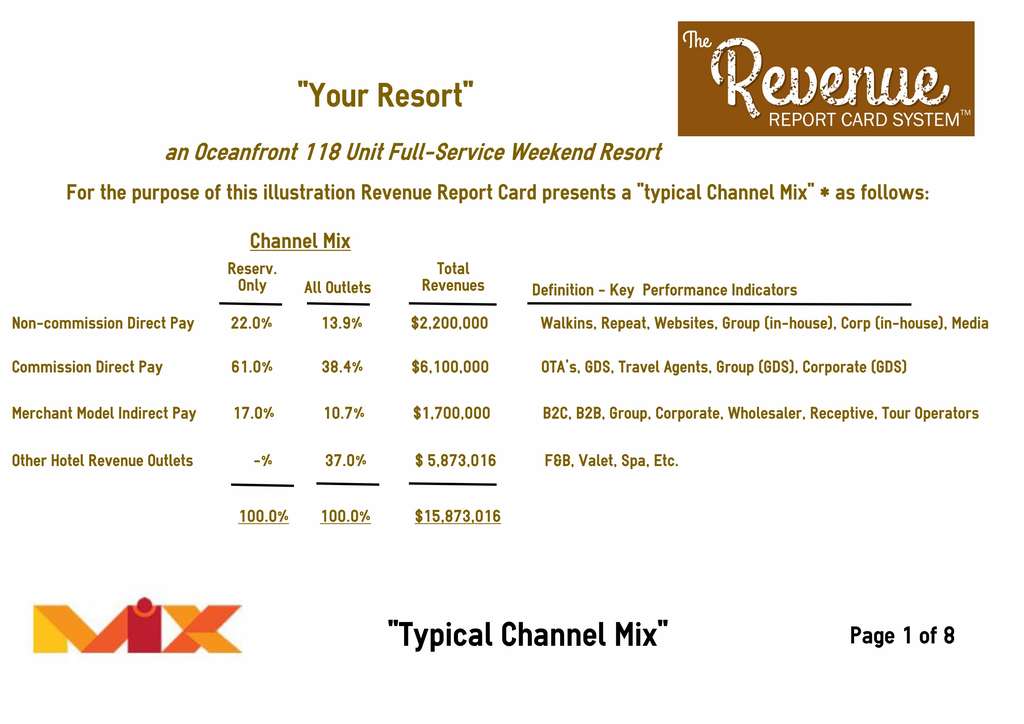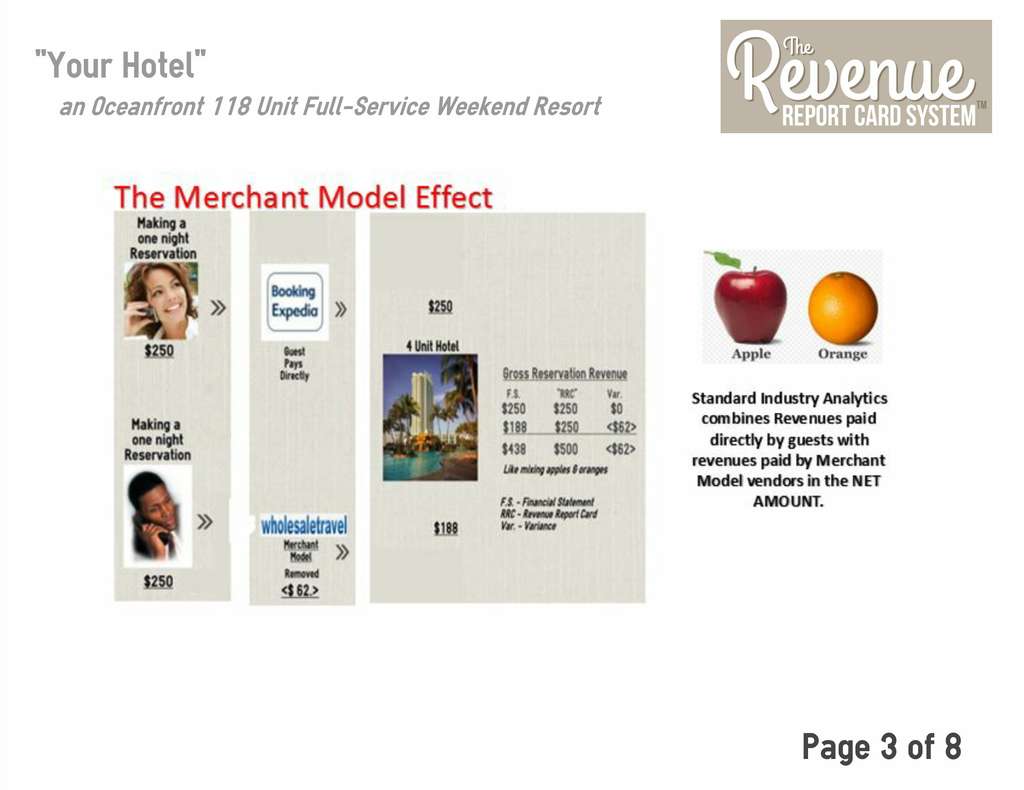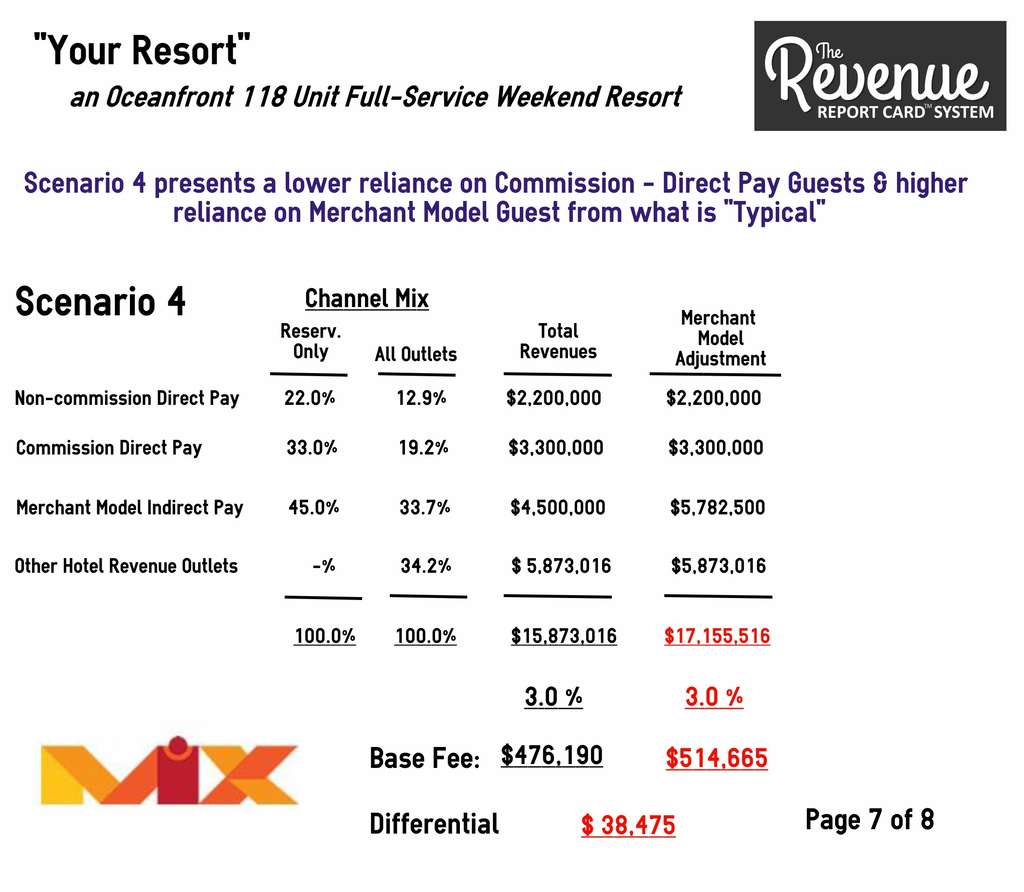Are Hotel Management Companies Getting Short Changed in Fees?
Series 1 of 2 on the implications of Channel Mix on management fees.
The two chief "compensation" components in any Hotel Management Agreement are the calculation of (1) base fees and (2) incentive fees. Typically base fees are calculated by multiplying a contracted percentage by Hotel Gross Revenues. Incentive fees, are typically calculated by multiplying a contracted percentage by the properties Gross Operating Profit. The discussion in today's narrative will focus on base fee. Incentive fees will be discussed in series article #2.
Channel Mix, and the related Merchant Model Effect, have far reaching consequences to revenue production and profitability. As I've pointed out in previous narratives, the Merchant Model Effect paints a scientifically flawed view of performance. That is because hotel industry has always grouped these two fundamentally dissimilar revenue-sources (direct pay and merchant model) into the Gross Reservation Revenue line together. When the hotel is paid directly by guests, management base fees are calculated on the full amount paid. When the hotel is paid "NET", by a third party vendor, management base fees are calculated on the amount paid to the hotel AFTER the commission is deducted. See the illustration labeled page 3 of 8 below.
The NET collection of fees can have significant implications on the base fee reward. Management companies overseeing resorts who have a moderate to high number of reservations from (merchant model) On-Line Travel Agents, Wholesalers, Receptives and Tour Operators are not receiving their just fee.
Merchant model fees / commissions will typically range from 23% to 37%. You can see the impact these can have on management company base fees. Management companies are being short changed in the calculation of base fees.
The following is a step-by-step view of how the base fee calculation is computed today and 4 different channel mix scenarios in which fees are calculated. The impact to the management company is of greater significance when consideration is given to the number of properties overseen.
In the following simplified illustrations I break revenues into four revenue components; (1) Non-commission direct pay guests, (2) commission direct pay guests, merchant model indirect pay guests (vendors) and other hotel revenue outlet revenues. Please see the illustration below entitled, page 1 of 8.
I elude to the channel mix on page 1 of 8 as "typical" for an oceanfront full service weekend resort. Needless to say yours can be different. Hence, the following 4 differing scenarios.
As a source of reference for "factors" used in this and the next article, please see the illustration entitled page 2 of 8.
I will be using a 3.0% base fee (and in the next piece 9% for incentive fees). The GOP I use is 30.4%.
Page 3 of 8 highlights the aforementioned merchant model effect discussed above. In this case we observe a $62 per room night on what the management company "should be entitled to". That would be $2 per reservation. Multiply that by the number of merchant model room nights in a hotel annually.
The channel mix in scenario 1 was discussed earlier.
Kindly note that without taking the merchant model effect into consideration, the management company today and for any and all channel mixes here, will receive $476,190.
A merchant model ADJUSTMENT would create an entitlement, however, of $490,981 on this particular mix. See the illustration entitled page 4 of 8 below.
Channel mix - scenario 2, illustrated below, shows higher non-commissioned direct pay guests, less commissioned direct pay guests and higher merchant model indirect paying guests. The results and differential are below on the illustration entitled page 5 of 8.
Page 5 of 8 shows the commission differential of what is paid and what, should be paid, to be $29,400.
Channel mix - scenario 3, illustrated below on page 6 of 8, shows a "typical" non-commission direct pay contribution of 22.0%, a slightly lower (53% compared to 61%) contribution of "commission – direct pay guests" to "typical" and a slightly higher contribution from the "merchant model indirect paying guest" (from 17.0% to 25.0%). The results are below on the illustration entitled page 6 of 8.
Finally, the channel mix in scenario 4, illustrated below, shows a "typical" "non-commission direct pay contribution" of 22.0%. The "commission direct pay guests" contribute 33.0% compared to 61.0% that is considered "typical" (a significant difference). Also, the contribution from the "merchant model indirectly paying guests" also shows a significant difference (45.0% compared to "typical" 17.0 %.) Results below, on the illustration entitled page 7 of 8, show a $38,475 fee differential on what is collected compared to what is entitled.
A summary of all pages presented can be viewed below in the illustration entitled page 8 of 8.
Channel mix, as it relates to management incentive fees, are equally as interesting and the implications also a good consideration. Here too, the management company is not recognized rewarded on channel optimization.
I'm not sure if the industry is ready to change toward channel mix changes. Still, as revenue management continues to offer significant advances and produce significantly higher profitability, perhaps this may one day be a contractual consideration! The investment that each management company make toward perfecting channel mix and, in turn, the revenue management discipline, would seem to indicate that reward should reflect success in optimization; in turn, it should be recognized in duly earned management base fees (and incentive fees).
Richard B Evans
President of Revenue Report Card LLC
(954) 290 - 3567















